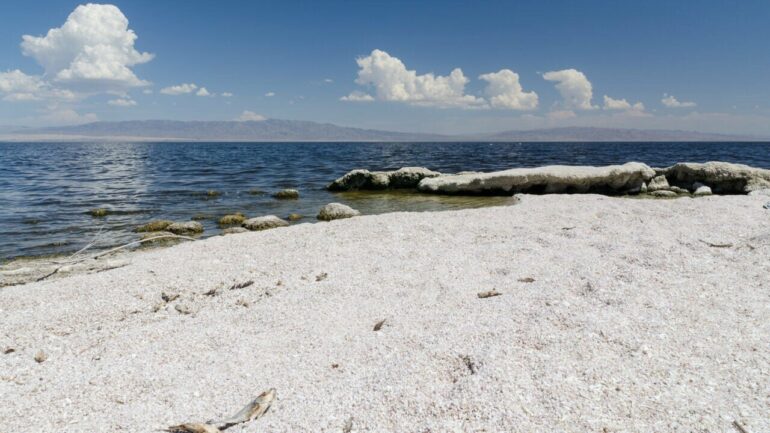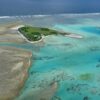Windblown dust from the shrinking Salton Sea harms the respiratory health of children living nearby, triggering asthma, coughing, wheezing and disrupted sleep, USC research shows.
The findings also indicate that children living closest to the sea, who are exposed to more dust in the air, may be the most affected.
The study, published in Environmental Research, found that 24% of children in the area have asthma—far higher than the national rate of 8.4% for boys and 5.5% for girls. The abnormally high rate raises health experts’ concerns about the children’s health in this predominantly low-income community of color 150 miles southeast of Los Angeles.
Furthermore, experts say, the dust problem is likely to intensify in a hotter climate, with evaporation exposing more and more of the lake bed, or playa, leading to more dust events.
Salton Sea and health: Conservation efforts making problem worse
Ironically, successful water conservation efforts are compounding the problem. As state conservationists reduce the agricultural runoff that flows into the Salton Sea, the lake is slowly disappearing. A combination of development and lithium mining may promise more economic opportunities—and an increase in truck traffic is likely to kick up more dust and further aggravate respiratory health issues.
“These rural environmental justice communities are facing health consequences due to local dust events,” said first author Jill Johnston, an associate professor of environmental health at USC. “The agricultural industry in Imperial Valley has used excessive amounts of water, but one of the impacts of water conservation is the shrinking of the sea.”
The Salton Sea was created by accident in 1905 by a canal system breach. Until recently, the sea was sustained largely by irrigation runoff from adjacent farmland. Over the past two decades, however, the decreasing waterflow has exposed 16,000 new acres of playa—and a lot of dust. Saline lake beds typically contain various harmful particulates—sulfate, chloride, pesticides and toxic metals such as arsenic, lead and chromium.
To better understand the relationship between airborne dust and respiratory health, researchers recruited 722 school-age children from the predominantly Latino/Hispanic community between 2017 and 2019. Parents and guardians completed a 64-item survey about their child’s health history of the previous 12 months, including episodes of asthma, a daily cough for three months in a row, congestion or excess phlegm for three months in a row.
Researchers then used data from a network of regulatory air monitors to estimate exposures to “dust events” in which hourly concentrations of dust exceeded 150 micrograms per cubic meter. The monitors measure levels of particulate matter in the air, including PM2.5 particles (typically from traffic and combustion) and the larger PM10 particles (typically dust and soil).
How far away: Salton Sea and health
The researchers also calculated the distance from the child’s home and the edge of the Salton Sea. Participants living within 7 miles of the sea were considered “close” for the analysis.
The research showed that dust events had a greater impact on wheezing and sleep disturbances among children living closest to the sea. In addition, each deviation increase from the average annual fine PM2.5 measure resulted in a 3.4 and 3.1 percentage point increase in wheezing and bronchitis symptoms, respectively.
“The community has long suspected that air pollution near the sea may be impacting children’s health,” Johnston said, “but this is the first scientific study to suggest that children living close to the receding shoreline may experience more severe direct health impacts. Protecting public health should be integrated into the mitigation plans.”
More information:
Jill E. Johnston et al, Air quality and wheeze symptoms in a rural children’s cohort near a drying saline lake, Environmental Research (2024). DOI: 10.1016/j.envres.2024.120070
Provided by
University of Southern California
Citation:
Salton Sea, an area rich with lithium, is a hot spot for child respiratory issues (2024, October 29)



